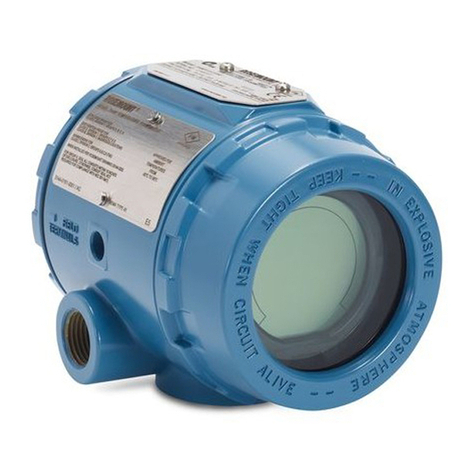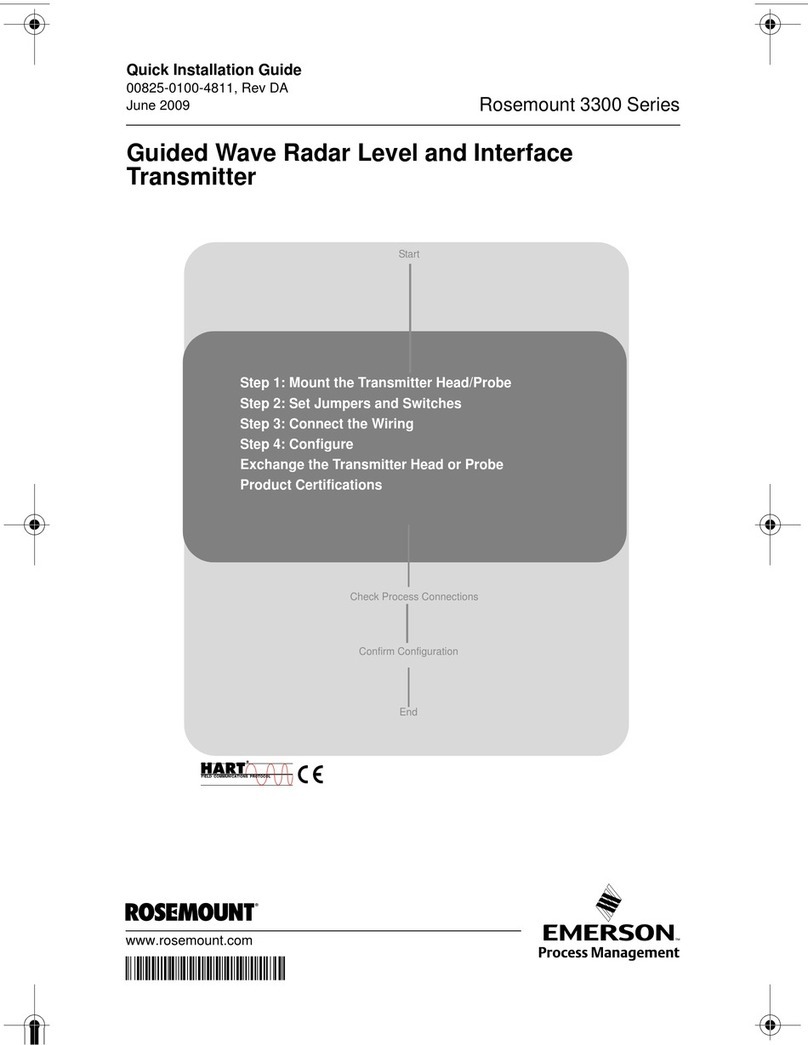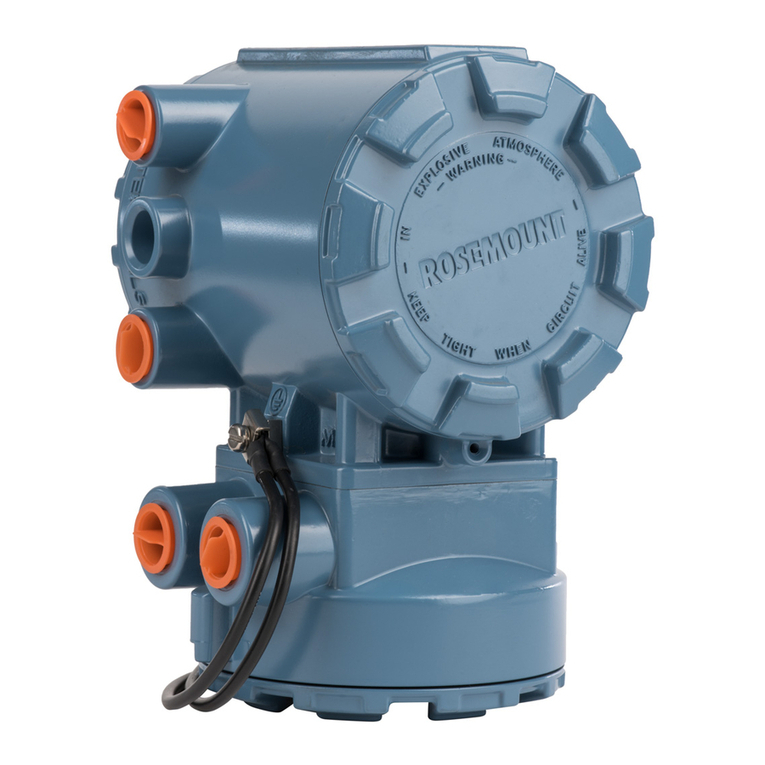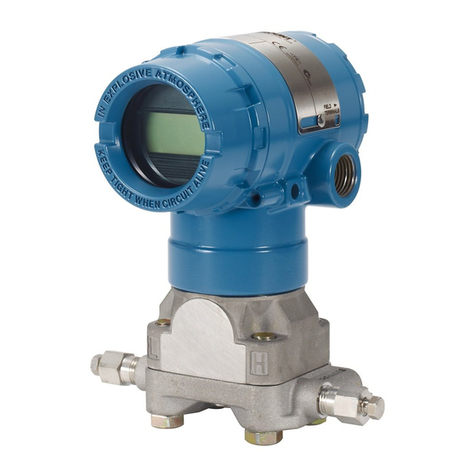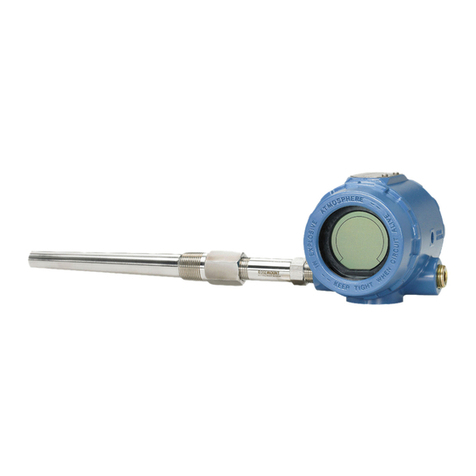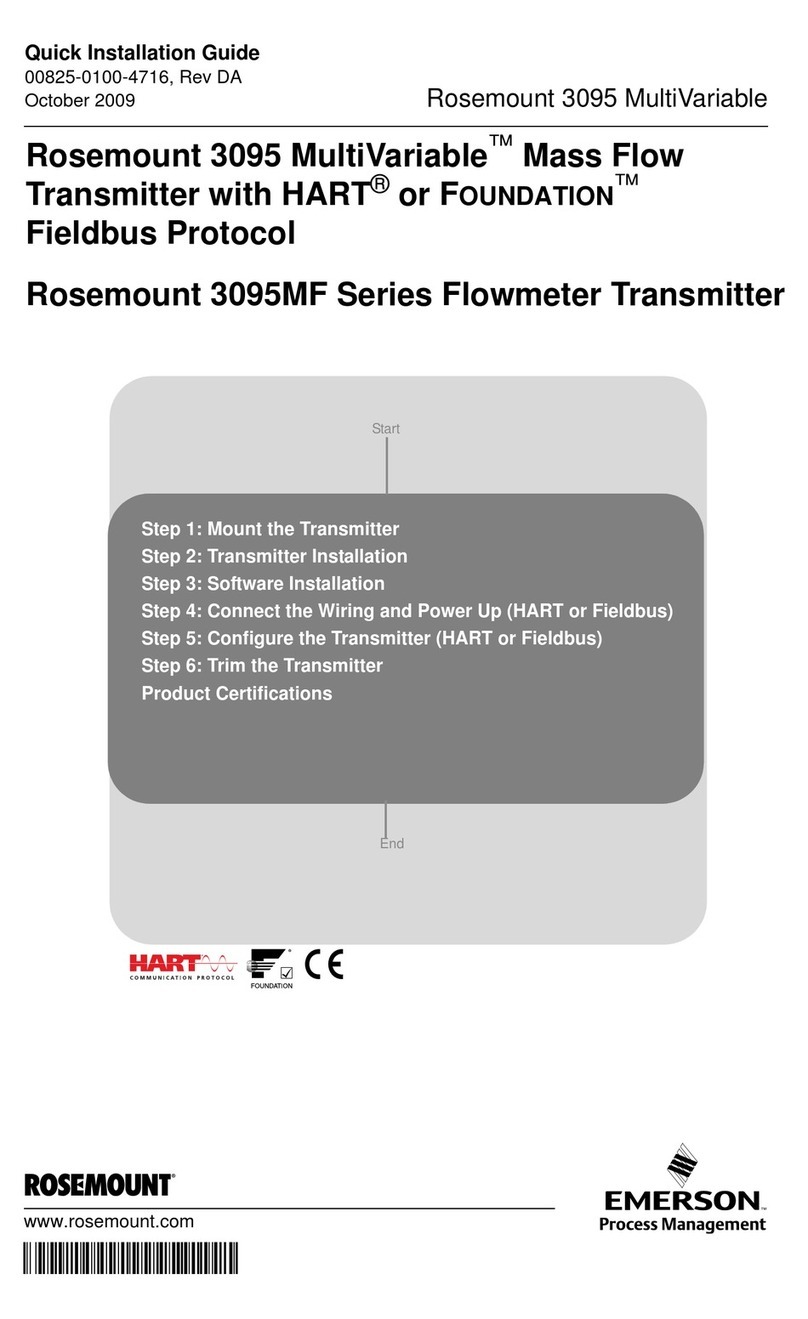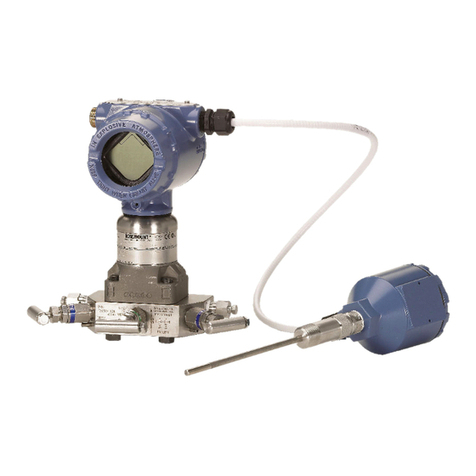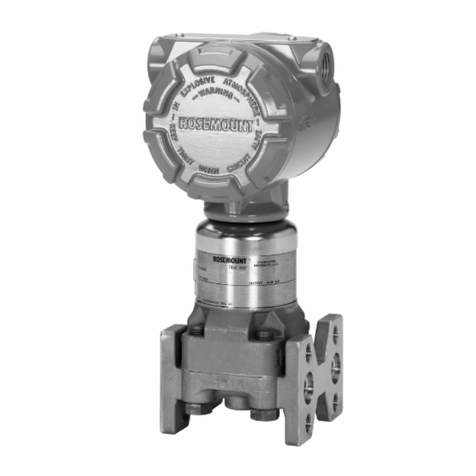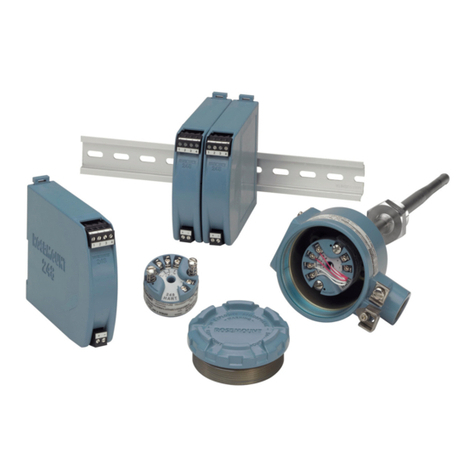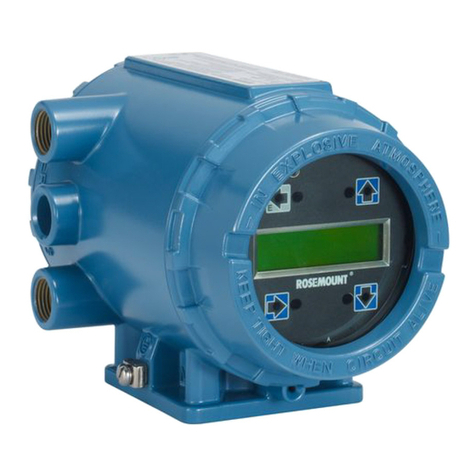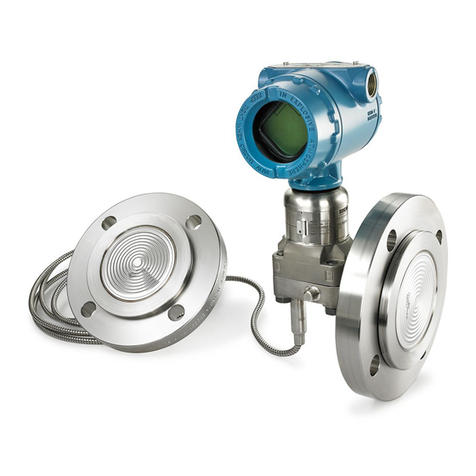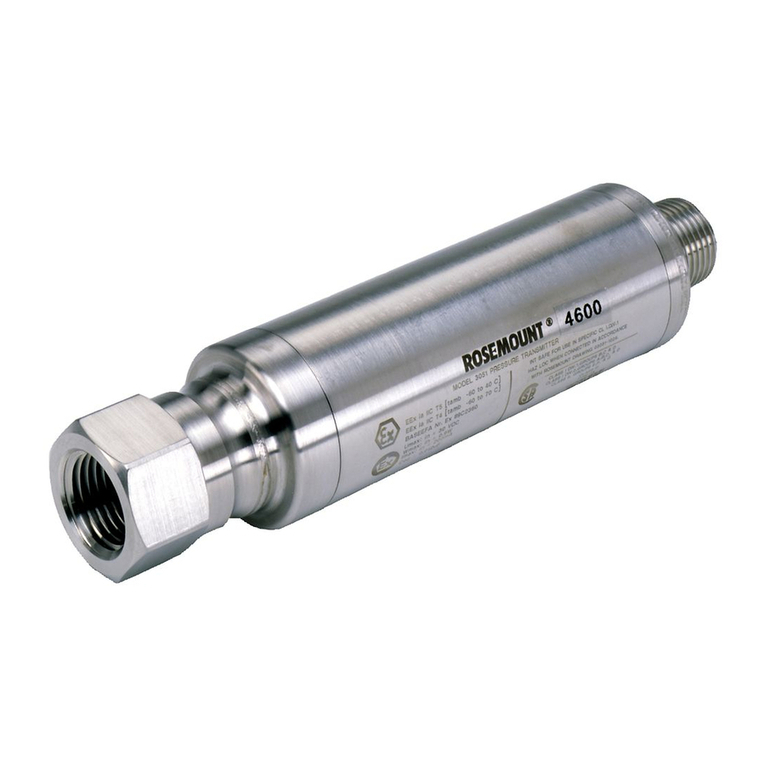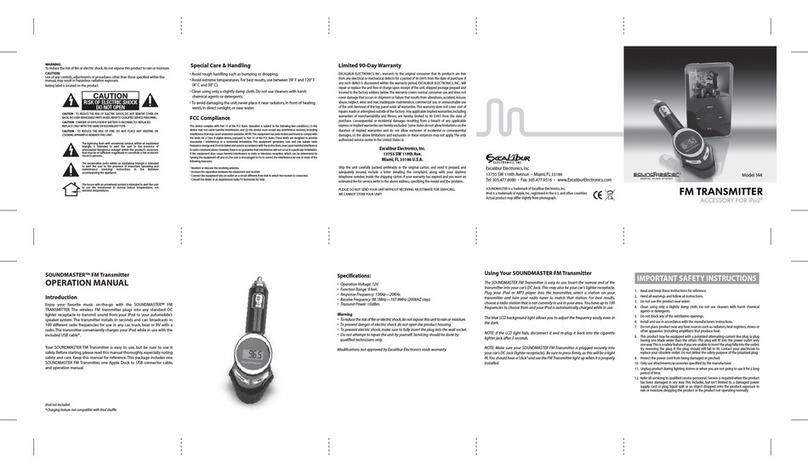
Technical Note – Communicate
00840-0200-4840, Rev. AA
June 2010
Rosemount 3107 and 3108
4
INSTALLATION BEST PRACTICES
The Rosemount 3107 and 3108 may be used for
level and volume measurement in open or closed
tanks, or open channel flow measurement.
The transmitter must be installed in a location where
it is protected from ultraviolet radiation to prevent
long term degradation of the plastics used in its
construction e.g. shrouded from direct sunlight.
It is important to correctly position the transmitter for
reliable ultrasonic level measurement. For maximum
accuracy and stability of the level measurement
reading, the transmitter should always be shrouded
from direct sunlight and radiated heat.
The transmitter may be site-tuned to deal with most
application conditions, but it is recommended that the
following guidelines be adopted wherever relevant.
General Considerations
See Product Manuals 00809-0200-4840 or
00825-0200-4840 for safety information.
Installation Considerations
a) Mount the transmitter above the liquid surface
using the 1-in. thread provided, but not closer
than 13.8 in. (0,35 m) to the surface. The
transmitter does not detect any liquid surface
closer than 12 in. (0,3 m) to the transmitter face.
Optional flanges and bracket kits are available to
help mounting. (See Product Data Sheet
00813-0200-4840 for spares and accessories).
b) The transmitter should be mounted vertically to
ensure a good echo from the liquid surface.
The beam half angle of the transmitter is
6 degrees (See Figure 2).
c) Obstructions in the tank, or well, may generate
echoes which can be confused with the real
liquid surface echo. Obstructions within the beam
angle generate strong false echoes. Wherever
possible, the transmitter should be positioned to
avoid false echoes.
d) To avoid detecting unwanted objects in the tank
or well, it is advisable to maintain a distance of at
least 1.3 in. from the center line of the transmitter
for every foot (11 cm per meter) range to the
obstruction.
e) No false echoes are generated if the transmitter
is located near the side of the tank or well, and
the wall is smooth and free of protrusions.
However, there will still be a reduction in the echo
size. It is recommended that the transmitter be
mounted no closer than 12 in. (0,3 m) to the wall
to avoid a large reduction in the echo size.
f) Fatty, dirty, or viscous liquids can cause a “scum
line” to build-up on the tank or well wall. Reduce
the effect of false echoes by enabling the “scum
line prevention” software feature in a Rosemount
3490 Series Control Unit.
g) If the transmitter is mounted in an enclosed tank
with a domed top, avoid mounting the transmitter
in the center of the tank roof because this could
act as a parabolic reflector and create unwanted
echoes.
h) Avoid applications where heavy condensation
could form on the transmitter.
i) If the transmitter is mounted in a stand-off or
nozzle, the transmitter face should protrude at
least 0.2 in. (5 mm) into the tank.
j) If the transmitter is used in environments where
direct sunlight can cause high surface
temperatures on exposed instruments, a
sun-shade is recommended.
Figure 2. Min and Max Distances From Tank Wall
Max. 3°
C = 1.3 in./ft (11 cm/m)
C
C Min. = 12 in. (0,3 m)
Use Non-metallic
Fitting / Flange
6° Beam
Half Angle


